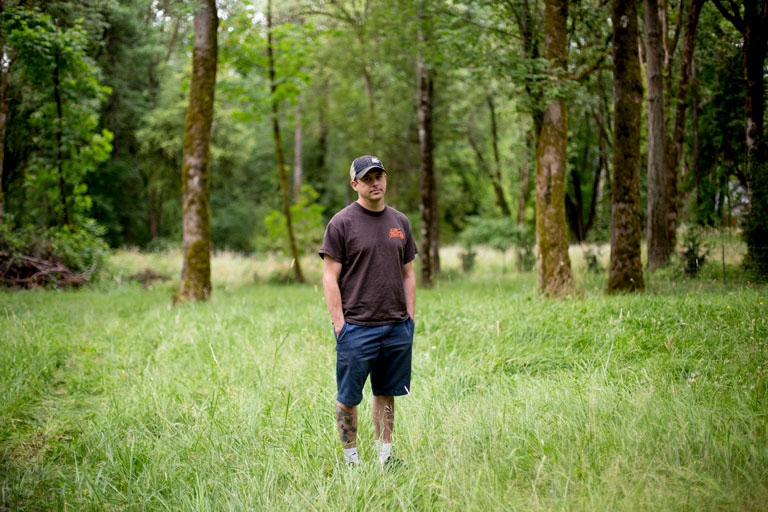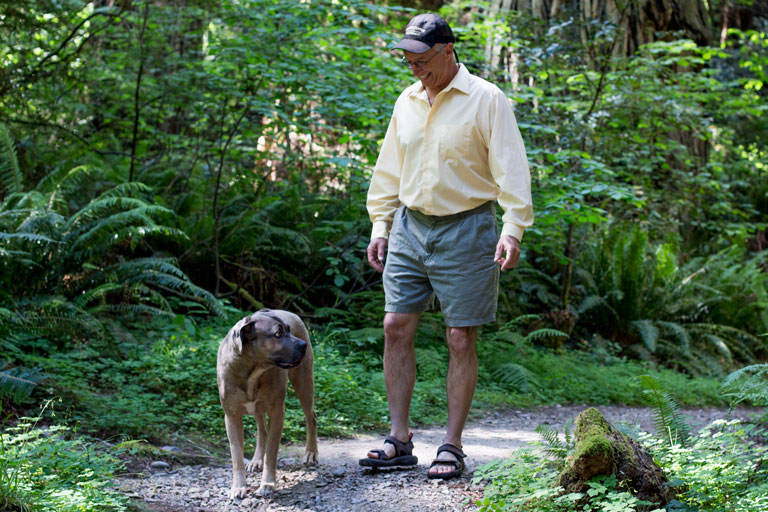“I think it’s too little too late, but I do have to recognize that there are people who are trying to change,” Lyon said.
He’s even changed his own outlook on marijuana.
Lyon said he used to cultivate 129 marijuana plants, which consumed every drop of the 60,000 gallons his rainwater tanks collect. He reduced his crop, though, and now grows fewer than the number of mature plants allowed by law.
He installed solar panels to provide the energy needed to move the rainwater uphill to his storage tanks. He uses ground-up coconut fibers as organic fertilizer.
But some consumers now demand earth-friendly products, and marijuana cultivators are responding.
Because the federal government does not recognize marijuana as a legal crop, it cannot receive the U.S. Department of Agriculture’s organic label, and therefore, isn’t regulated to the same environmental standards as other major crops.
When Chris Van Hook’s abalone farming days ended in 2012, he used his environmental background and a newly acquired law degree to develop an organic certification for marijuana plants.
He claims he loosely based his “Clean Green” recognition on the USDA’s organic certification. It’s difficult for growers to gain Van Hook’s certification, though, because it requires growers to not only limit pesticide use on their plants but also to prove they get resources legally.
“In 2015, we’ve actually been turning down more applicants than we ever have before because of the drought in the West and in California, in particular,” Van Hook said.
Patrick Rooney, a grower and part owner of Vashon Velvet — on Vashon Island, Washington — said energy has been a central focus of keeping his indoor grow “thoughtful” in terms of its impact. He described the business as a “sustainable artisan marijuana farm.”

Patrick Rooney, a grower for Vashon Velvet, a family-owned cannabis farm on Vashon Island, is concerned that as more growers join the market, the amount of energy consumed will increase exponentially. (Photo by Kathryn Boyd-Batstone | News21)
Rooney and his partners use about 55 energy-saving LED lights rather than high-wattage lights, which also produce heat. By using LED lights, Rooney not only conserves energy, but he reduces the costs associated with cooling down an overheated space.
As more people join the marijuana industry, Rooney said there is cause for concern: More growers means higher energy consumption for cultivation.
“Cannabis is an aggressive indoor plant,” he said. “(It) needs a lot of light, a lot of nutrients.”
But as consumers become more aware of where their marijuana comes from and the footprint it leaves behind, he expects them to seek out smaller, more sustainable grows.
“We go for quality over quantity here,” he said. “And I think we’re able to do that because we’re focusing so much on the environmental impact of what we’re doing.”
Jesse Peters of Eco Firma Farms has taken a different approach to sustainable energy.
Eco Firma Farms exclusively uses wind turbines to meet its energy needs, and it is moving toward being a carbon-neutral operation from beginning to end, he said.
“We’re trying to keep a sustainable method here at this farm and set an example,” Peters said, “so that we can flourish as an industry without being too hard on the environment.”
As for the growers trying to do things right, Lyon said, “We’re not criminals. We’re not outlaws. We’re not dangerous. We’re just country people. I’m just an old man on a mountain with an old dog.”
News21 journalists Kathryn Boyd-Batstone, Brittan Jenkins and Matias J. Ocner contributed to this article.
This story has been updated to correct Chuck Lyon's location. He lives in Mendocino County, California.








